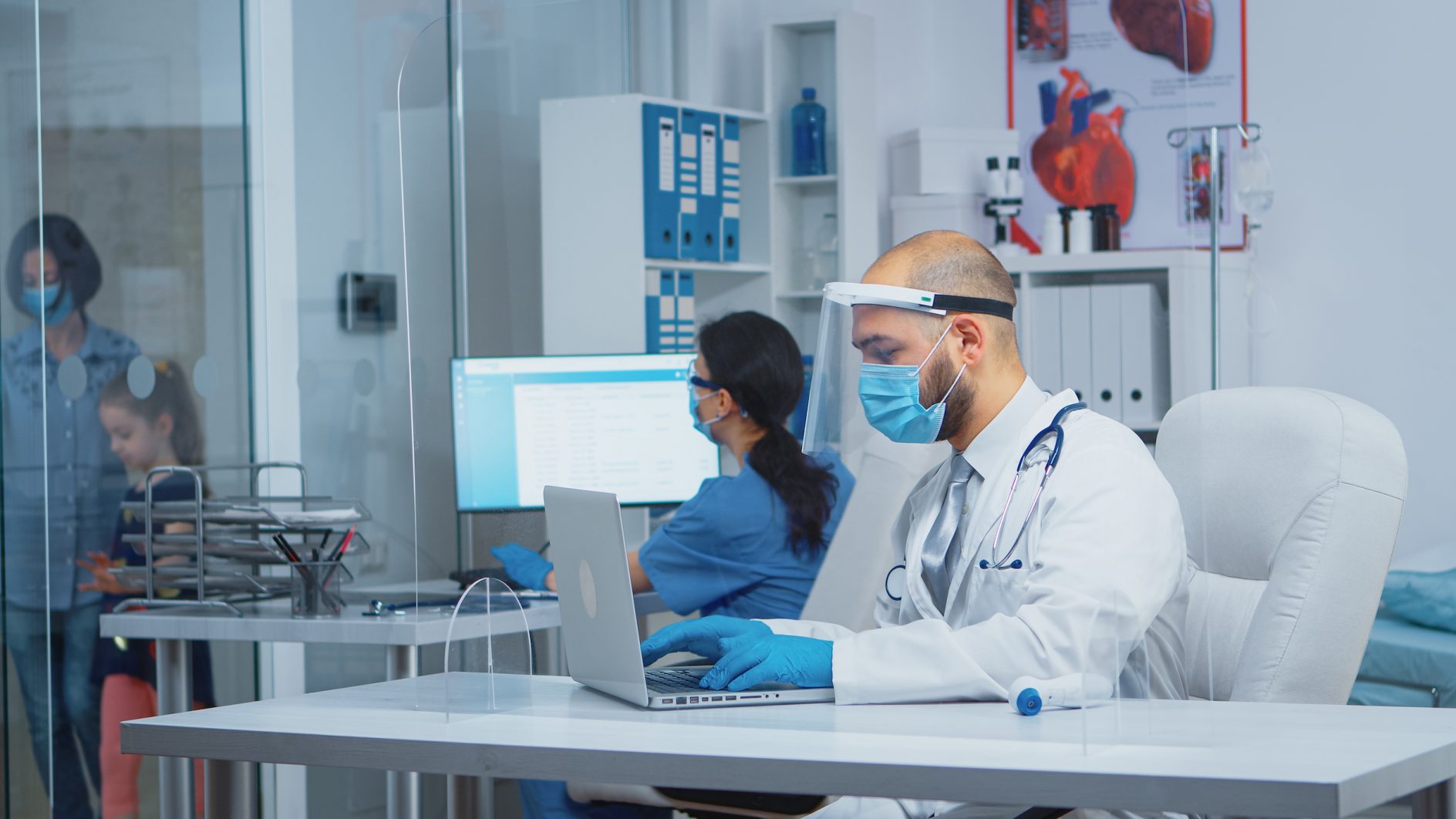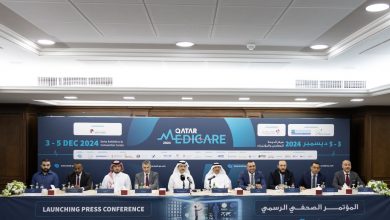HMC: Safe and Complete Care for Premature Babies and Newborns
مؤسسة حمد الطبية: رعاية آمنة ومتكاملة للأطفال الخدج وحديثي الولادة
QNA
Doha: The health system in the State of Qatar is witnessing great development and tangible progress at all preventive and curative levels, as well as the standards of health care provided to all residents of the State of Qatar, regardless of their age and the type of diseases, thanks to the priority the State gave to this important sector on the basis that a person who is physically and psychologically healthy is more capable than others of giving, producing and actively contributing to the advancement of the nation.
In this context, the care of newborns and premature infants receives great attention, due to the health problems and difficulties that usually accompany their premature births, whether those related to the health of the mother, or those related to the health of the newborns themselves, which are often discovered before they are born.
The Intensive Care Unit for newborns and premature babies and those in charge of it at the Women’s Wellness and Research Center at Hamad Medical Corporation are making great efforts to care for this category of newborns, especially since they suffer from many complex health problems when they are born, which includes their small sizes, low weight and incomplete growth of all their organs. This results in difficulties in feeding, growth, breathing and others, especially since some of them may have premature birth due to a disability accompanying their pregnancy.
There is no doubt that the neonatal intensive care units at Hamad Medical Corporation have made remarkable progress in the care of premature infants that made the State of Qatar at the forefront of countries that recorded the highest level of services to preserve the health of premature infants globally. This is thanks to the many services provided by these units in this field, the accumulated medical and nursing expertise available, and the great success of the programs they set and implement for the benefit of these children and their families, which contributes to their recovery and their exit from the unit in a good and stable health condition.
Senior Consultant and Medical Director of Neonatal Intensive Care Unit (NICU) at Women’s Wellness and Research Center (WWRC) Dr. Mai Abdulla Al Qubaisi said, in a conversation with Qatar News Agency (QNA), that the newborn and premature babies unit at the Corporation is considered one of the largest units compared to its counterparts in the Middle East. It accommodates 112 beds or an incubator, and annually receives between 2000 to 2500 children and newborns, males and females.
She explained that the unit includes two sections, one for intensive care for premature babies who are born with a gestation period of 24 to 27 weeks, and their weights range from 500 to 800 grams, while the second section is concerned with intensive care for those who are born after more than 28 weeks, knowing that the normal pregnancy period is about 40 weeks or about 280 days. The general medical definition of a premature baby is a baby born after a uterine gestation period of less than 37 weeks, she pointed out.
Dr. Al Qubaisi stated that the critical period for newborns and premature infants is for those who are born in the 23rd and 24th week. She attributed this to the fact that it is the period during which resuscitation becomes possible. However, she indicated that the process of resuscitating those under 23 weeks of age is sometimes carried out according to certain medical criteria related to the weight of the child and the preparation of the mother for childbirth and delivery with medicines that help her childs growth and getting rid of infections, as well as the criterion of the weight of the premature baby. Moreover, she pointed out that every growth week that a child born at 23 weeks of age passes, increases his or her chances of life and exit from the unit without chronic health problems, with continuous follow-up, adding that the minimum weight of a premature baby in the unit is 480 grams, less than half a kilogram.
Medical Director of Neonatal Intensive Care Unit (NICU) at Women’s Wellness and Research Center (WWRC) Dr. Mai Abdulla Al Qubaisi confirmed that the percentage of safe and stable exit from the neonatal intensive care unit now for premature infants, whose gestation period between – 24 to 28 weeks – at WWRC, is much better than in previous years, due to the new technologies used by the unit in terms of devices, medicines, nutrition and other modern medical care methods that are applied.
Dr. Al Qubaisi noted that there are many reasons that lead to premature births, as well as the recovery of premature babies, adding that these reasons necessarily differ from one child to another and from one mother to another, and in terms of severity and danger, which, in turn, is reflected in the speed of recovery and growth and the period of stay and exit from the unit.
She indicated that the premature baby will remain in the unit until the time of his natural birth, which was determined for the mother at the beginning of the pregnancy, pointing out that most premature newborn babies who leave the unit after checking on their health do not suffer from chronic or complex health issues, such as difficulties with movement, learning and growth.
With regard to the premature and newborn babies feeding system, Dr. Al Qubaisi said that the unit applies an approved and recognized international protocol. She explained that a premature baby at the age of 34 weeks is fed intravenously, due to the fact that his muscles do not help him suck milk. Milk is given after that in appropriate quantities and at an appropriate age, with preference for mothers milk to premature infants in particular.
Dr. Al Qubaisi cautioned that most children at the age of less than 34 weeks need technical assistance with regard to breathing through a tube, a mask, or with normal oxygen, also according to the childs age, growth, weight and disease condition, confirming that the available respirators in this unit is the most modern in the world.
It is also rare to follow up on cases of conjoined premature twins and to take care of their mothers until their birth, and before they are separate in Sidra Hospital, Dr. Al Qubaisi said, noting in a related context that there is an international program applied in Qatar to transfer premature infants from one hospital to another, governmental or private, depending on the condition of the child and the availability of the intensive care required for him and the completion of his treatment in the concerned hospital. She said that the Ministry of Public Health has adopted a comprehensive program for the integrated assessment process in this regard, which includes doctors, respiratory specialists, nursing and ambulance crews.
Dr. Al Qubaisi revealed that the unit started giving premature and newborn babies in Qatar, who are less than 34 weeks of age, a drug called surfactant that helps in the growth of the lungs, and thus ease of breathing, and said that it is a new procedure in Qatar that would avoid the use of a breathing device, noting that studies have proven that the more the breathing tube and device are dispensed with, the better the result will be in terms of the child’s growth and chances of survival after that at this age and low weight.
She added that the care for these children is not limited to the unit only, but they continue to follow up and provide the necessary support to them and their families at home and in specialized clinics through an integrated medical team that includes physiotherapists and nutrition specialists, to assess the child’s condition and to ensure his safety, and transfer him to other specialties as needed and when necessary, according to the early diagnosis program that is applied to discover no developmental delay.
She added, we also have groups to support families of premature babies, consisting of doctors, social workers, psychological and other functional specialists, and mothers of former premature babies, all of whom help with advice and health guidance, and this includes our celebration of the World Prematurity Day which is observed annually on November 17, in addition to shedding light on the methods of health care to be followed towards this category of premature and newborns.”
As a result of this great effort made by the Neonatal Intensive Care Unit (NICU) and its various departments, the unit achieved remarkable results in the field of the quality of services and care for premature infants, which made Qatar one of the advanced countries in this field at the international level.
Dr. Mai Al Qubaisi said that the unit received many praises for these advanced positive results, whether from the World Health Organization or from countries in the Middle East. She also expressed her desire to benefit from the Qatari experience in this important field, which is mainly concerned with the care of premature and newborn children in Qatar.
قنا
الدوحة: يشهد النظام الصحي في دولة قطر تطورا كبيرا وتقدما ملموسا على كافة الصعد الوقائية والعلاجية، وفي مستويات الرعاية الصحية المقدمة والمتكاملة لجميع سكان دولة قطر على مختلف فئاتهم العمرية، ونوعية الأمراض، من البسيطة إلى المتوسطة ومنخفضة وعالية الخطورة إلى المعقد منها، وذك بفضل ما توليه الدولة لهذا القطاع الهام من أولوية وعناية فائقة باعتبار أن العقل السليم في الجسم السليم، ومن منطلق أن الإنسان المعافى بدنيا ونفسيا وجسديا أكثر قدرة من غيره على العطاء والبذل والإنتاج والإسهام الفاعل في نهضة الوطن ورفعته.
وفي هذا السياق فإن رعاية الأطفال حديثي الولادة والخدج منهم تحظي بعناية كبيرة ودرجة عالية من الاهتمام، بسبب المشاكل والصعوبات الصحية التي تصاحب عادة ولاداتهم المبكرة، سواء ما يرتبط منها بصحة الأم، أو تلك التي تتعلق بصحة هؤلاء المواليد أنفسهم، والتي يتم غالبا اكتشافها قبل ولادتهم وهم في أرحام أمهاتهم.
وتبذل وحدة العناية المركزة للأطفال حديثي الولادة والخدج والقائمين عليها بمركز صحة المرأة والأبحاث بمؤسسة حمد الطبية، جهودا مقدرة ومضاعفة للعناية بهذه الفئة من المواليد، خاصة وأنهم يعانون العديد من المشاكل والصعوبات الصحية المعقدة عند ولادتهم، ومن أهمها صغر أحجامهم وقلة الوزن وعدم اكتمال نمو كافة أعضائهم، ما يترتب عليه صعوبات في التغذية والنمو والتنفس وغيرها، لا سيما وأن بعضهم قد تكون ولادته المبكرة بسبب إعاقة مصاحبة لحمله.
ولا شك أن وحدات العناية المركزة للأطفال حديثي الولادة بمؤسسة حمد الطبية قد أحرزت تقدما بارزا في رعاية الأطفال الخدج وتحقيق أفضل النتائج الممكنة التي جعلت دولة قطر في مقدمة الدول التي سجلت أعلى مستوى من الخدمات والرعاية للحفاظ على صحة الأطفال الخدج عالميا، وذلك بفضل الخدمات العديدة التي توفرها تلك الوحدات في هذا المجال والخبرات الطبية والتمريضية المتراكمة المتوفرة لديها، والنجاح الكبير للبرامج التي تضعها وتنفذها لفائدة هؤلاء الأطفال وأسرهم، ما يسهم في تعافيهم وخروجهم من الوحدة بحالة صحية طيبة ومستقرة، بل ومتابعتهم والتواصل مع أسرهم بعد ذلك.
وقالت الدكتورة مي عبد الله القبيسي استشاري أول ورئيسة قسم العناية المركزة للأطفال حديثي الولادة بمركز صحة المرأة والأبحاث بمؤسسة حمد الطبية في حوار مع وكالة الأنباء القطرية /قنا/ “إن وحدة الأطفال حديثي الولادة والخدج بالمؤسسة تعتبر من أكبر الوحدات مقارنة بمثيلاتها في منطقة الشرق الأوسط، وتتسع لـ 112 سريرا أو حاضنة، وتستقبل سنويا ما بين 2000 إلى 2500 طفل ومولود، من الذكور والإناث”.
وأوضحت أن الوحدة تضم قسمين، أحدهما للعناية الفائقة للأطفال الخدج ممن يولدون وتتراوح فترة حملهم بين 24 إلى 27 أسبوعا، وأوزانهم بين 500 إلى 800 جرام، في حين يعنى القسم الثاني بالعناية المركزة لمن تتم ولادتهم لأكثر من 28 أسبوعا، علما أن فترة الحمل الطبيعية هي حوالي 40 أسبوعا أي نحو 280 يوما، مشيرة إلى أن التعريف الطبي العام للطفل الخديج هو أنه الطفل الذي يولد بعد مدة حمل رحمي أقل من 37 أسبوعا.
وذكرت أن الفترة الحرجة للأطفال حديثي الولادة والخدج هي لمن تتم ولادتهم في الأسبوع 23 و 24 من حملهم ولأسباب شتى، وأرجعت ذلك لكونها الفترة التي تصبح فيها عملية إنعاشهم ممكنة، لكنها بينت أن عملية إنعاش من هم في عمر أقل من 23 أسبوعا تتم أحيانا وفق معايير طبية معينة تتعلق بوزن الطفل وتهيئة الأم للولادة والوضع بالأدوية التي تساعد على نمو طفلها والتخلص من الالتهابات والعدوى، فضلا عن معيار وزن الطفل الخديج، لافتة إلى أن كل أسبوع نمو يمر على طفل يولد في عمر 23 أسبوعا، يزيد من فرص حياته وخروجه من الوحدة دون مشاكل صحية مزمنة، مع المتابعة المستمرة له، وقالت: “إن أقل وزن لطفل خديج بالوحدة هو 480 جراما أي أقل من نصف كيلو جرام”.
وأكدت الدكتورة مي عبد الله القبيسي، استشاري أول ورئيسة قسم العناية المركزة للأطفال حديثي الولادة بمركز صحة المرأة والأبحاث بمؤسسة حمد الطبية أن نسبة الحياة والخروج الآمن والمستقر من الوحدة والحضانات الآن بالنسبة للأطفال الخدج بالعناية الفائقة ممن تتراوح فترات حملهم بين- 24 إلى 28 أسبوعا – بمركز صحة المرأة والأبحاث، أفضل بكثير من السنوات السابقة، جراء التقنيات الجديدة المتبعة بالوحدة من ناحية الأجهزة والأدوية والتغذية وغيرها من أساليب الرعاية الطبية الحديثة التي يتم تطبيقها .
ونوهت إلى وجود الكثير من الأسباب التي تؤدي إلى الولادات المبكرة، وكذا تعافي المواليد الخدج، سواء من هم في قسم العناية الفائقة أو المركزة ، وقالت إن هذه الأسباب تختلف بالضرورة من طفل لآخر ومن أم لأخرى، ومن حيث شدتها وخطورتها وانخفاض حدتها، وهو ما ينعكس بدوره على سرعة التعافي والنمو ومدة البقاء بالوحدة والخروج منها .
وبينت في هذا السياق أن الطفل الخديج سيبقى في الوحدة حتى يحين موعد ولادته الطبيعية التي تم تحديدها للأم في بداية الحمل، لافتة إلى أن أغلب الأطفال الخدج وحديثي الولادة الذين يغادرون الوحدة بعد الاطمئنان على صحتهم، تكون حالتهم مستقرة ولا يعانون من مشاكل صحية مزمنة أو معقدة مثل صعوبات الحركة والتعلم والنمو .
وبشأن نظام تغذية الأطفال الخدج وحديثي الولادة، قالت الدكتورة مي عبد الله القبيسي إن الوحدة تطبق في هذا الخصوص بروتوكولا دوليا معتمدا ومتعارفا عليه ، وأوضحت أن الطفل الخديج في عمر 34 أسبوعا تتم تغذيته عن طريق الوريد، وذلك لأسباب علمية مردها أن عضلاته لا تسعفه على مص الحليب، مع اعطاء الحليب بعد ذلك بكميات مناسبة وفي عمر مناسب، وتفضيل حليب الأم للأطفال الخدج خاصة .
ونبهت الدكتورة القبيسي في هذا السياق إلى أن أغلب الأطفال في عمر أقل من 34 أسبوعا يحتاجون للمساعدة التقنية فيما يتعلق بالتنفس عن طريق الأنبوب أو الكمامة أو بالأكسجين العادي، وذلك أيضا حسب عمر الطفل ونموه ووزنه وحالته المرضية، وأكدت أن ما يتوفر من أجهزة التنفس بهذه الوحدة في مركز صحة المرأة والأبحاث هو الأحدث منها على مستوى العالم .
وبينت أن من الحالات النادرة أيضا بالوحدة متابعتها لحالات توائم خدج متلاصقين والعناية بأمهاتهم حتى ولادتهم، وقبل انتقالهم لفصلهم في مستشفى سدرة ، مشيرة في سياق متصل إلى وجود برنامج دولي مطبق في قطر يقضي بنقل الأطفال الخدج من مستشفى لآخر ، حكومي أو خاص بالدولة، حسب حالة الطفل وتوفر العناية الفائقة المطلوبة له وتكملة علاجه في المستشفى المعني. وقالت إن وزارة الصحة العامة قد اعتمدت برنامجا شاملا لعملية التقييم المتكاملة في هذا الخصوص ، يضم أطباء واختصاصيي التنفس وأطقم تمريض وإسعاف .
وكشفت الدكتورة القبيسي في سياق متصل عن أن الوحدة بدأت في اعطاء الأطفال الخدج وحديثي الولادة في قطر ممن تقل أعمارهم عن 34 أسبوعا ، دواء يسمى ” surfactant” يساعد في نمو الرئتين، وبالتالي سهولة التنفس، وقالت إنه إجراء جديد في قطر من شأنه تفادي استخدام جهاز التنفس، ووضع الطفل بدلا من ذلك على أنبوب تنفس استخدام الكمامة فقط على الأنف، وهي طريقة علميا وعالميا تسمى “ليزا” ، مشيرة في هذا الصدد إلى أن الدراسات أثبتت أنه كلما تم الاستغناء عن جهاز وأنبوب التنفس، ومنع استعمالهما، تكون النتيجة أفضل من حيث نمو الطفل وفرص بقائه على قيد الحياة بعد ذلك وهو في هذا العمر والوزن القليل .
ومضت قائلة في حوارها مع /قنا/ “لا تقتصر رعايتنا لهؤلاء الأطفال بالوحدة فقط، بل نستمر بعد ذلك في متابعتهم وتقديم الدعم اللازم لهم وأسرهم في المنزل وفي العيادات التخصصية عن طريق فريق طبي متكامل يضم اختصاصيي علاج طبيعي ووظائفي وتغذية، لتقييم حالة الطفل والاطمئنان على سلامته، وتحويله لتخصصات أخرى حسب الحاجة وعند الضرورة، وفقا لبرنامج التشخيص المبكر الذي نطبقه لاكتشاف أي تأخر في النمو”.
وأضافت قائلة “لدينا كذلك مجموعات لدعم أسر الأطفال الخدج، تتكون من أطباء واختصاصيين اجتماعيين وتخصصات نفسية ووظائفية أخرى، وأمهات أطفال خدج سابقين، تساعد جميعها بالخبرات والنصائح والإرشادات الصحية، أسر وأمهات الأطفال الخدج الحاليين وتقدم الدعم النفسي والمعنوي والصحي لهم، ويشمل ذلك احتفالنا باليوم العالمي للطفل الخديج في 17 نوفمبر كل عام، والذي يتم فيه أيضا تكريم الأمهات ممن مررن بأوقات صعبة أثناء فترة تواجد أبنائهن بالعناية المركزة وحتى خروجهم منها، وكذا تسليط الضوء على أساليب الرعاية الصحية الواجب اتباعها تجاه هذه الفئة من المواليد الخدج وحديثي الولادة ” .
يذكر أنه نتيجة لهذا الجهد الكبير الذي تبذله وحدة العناية بالأطفال حديثي الولادة بمركز صحة المرأة والأبحاث بمؤسسة حمد الطبية وبأقسامها المختلفة، حققت الوحدة نتائج ملحوظة ولافتة في مجال جودة خدمات ورعاية الأطفال الخدج، مما جعل قطر من الدول المتقدمة في هذا المجال على المستوى الدولي، وهو ما أتاح لهم فرص الحياة في حاضنات الأطفال التي مثلت لهم وعلى مدى شهور أرحاما بديلة .
وفي هذا الصدد قالت الدكتورة مي القبيسي إن الوحدة تلقت الكثير من الإشادات بهذه النتائج الإيجابية المتقدمة سواء من منظمة الصحة العالمية أو من دول في منطقة الشرق الأوسط، أبدت رغبتها كذلك في الاستفادة من التجربة القطرية في هذا المجال الهام الذي يختص أساسا برعاية شريحة الأطفال الخدج وحديثي الولادة بدولة قطر .




